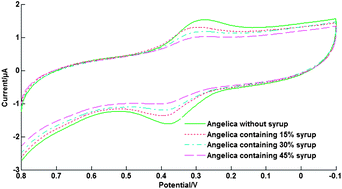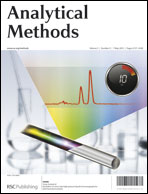Determination of Chinese Angelica honey adulterated with rice syrup by an electrochemical sensor and chemometrics
Abstract
A facile electrochemical sensor strategy coupled with a chemometric method was developed to analyze Chinese Angelica honey samples adulterated with rice syrup based on the decrease of natural


 Please wait while we load your content...
Please wait while we load your content...